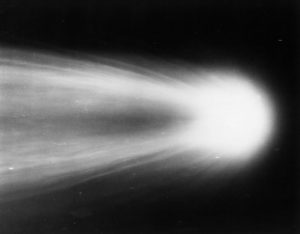What are comets?
Astronomers recently watched a comet break into pieces, practically before their eyes. Their observations, reported by scientists at Johns Hopkins University, have given them surprising insight into the structure of these space objects.
What are comets?
Comets are fairly small (about 12 miles across or less) balls of ice, rock, and dust. They make long, non-circular orbits around the sun. When a comet comes close to the sun, the star’s heat melts some of it, creating what looks like a tail. At this stage, it looks somewhat like a tadpole. Comets sometimes burst into pieces when the sun’s heat turns their ice into water vapor.
Until a few years ago, scientists thought that a comet’s center would be different from its surface. That’s because comets probably formed at the same time as the solar system, so the material at the center has probably remained unchanged for just as long. The surface material, on the other hand, is changed by the sun’s radiation.
For the new study, the Johns Hopkins team observed the breakup of a comet called 73P/Schwassmann-Wachmann 3 (SW3). The comet orbits the sun every 5.34 years. In 1995, SW3 split into at least five chunks. In June 2006, it disintegrated even more.
The two largest chunks are called B and C. The scientists studied both and found that B and C have nearly identical compositions, with the same proportions of substances such as water and carbon dioxide. Because this was the first study of its kind, the scientists don’t yet know whether all comets are the same, inside and out.